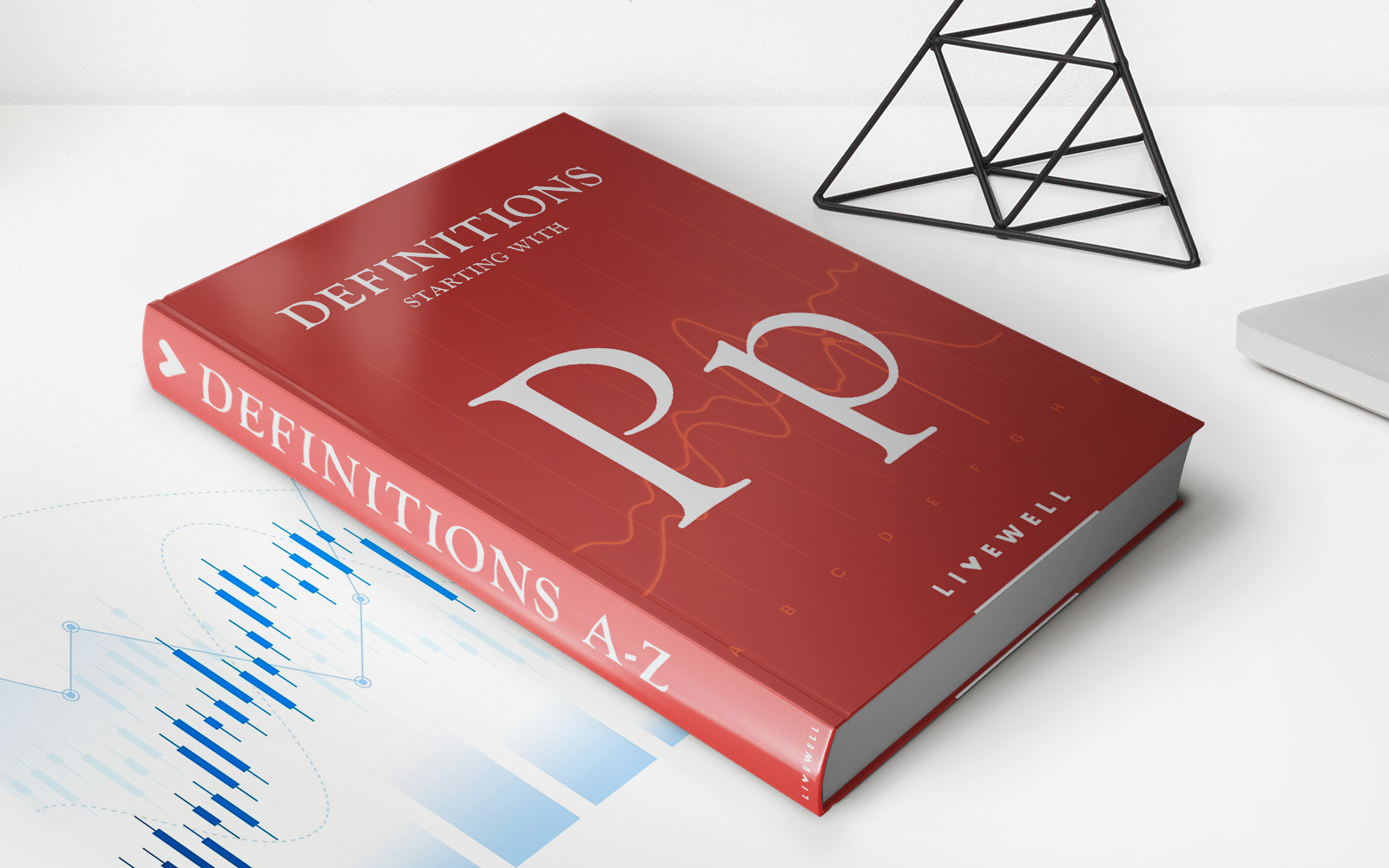

Finance
How To.Use Life Insurance While You’re Alive
Published: November 23, 2023
Discover the key to optimizing your finances with life insurance, even while you're still alive. Unlock the power of financial security and flexibility for a brighter future.
(Many of the links in this article redirect to a specific reviewed product. Your purchase of these products through affiliate links helps to generate commission for LiveWell, at no extra cost. Learn more)
Table of Contents
- Introduction
- Understanding the Purpose of Life Insurance
- Different Types of Life Insurance Policies
- Whole Life Insurance
- Term Life Insurance
- Universal Life Insurance
- How Life Insurance Works While You’re Alive
- Cash Value Accumulation
- Policy Loans and Withdrawals
- Using Life Insurance for Retirement Planning
- Supplementing Income with Life Insurance
- Paying for Long-Term Care Expenses
- Estate Planning with Life Insurance
- Conclusion
Introduction
Welcome to the world of life insurance, where the protection and financial security it provides extends beyond the traditional perception of benefiting only your loved ones after you’re gone. Life insurance can play a valuable role in your financial planning even while you’re alive.
Life insurance is a contract between the policyholder and the insurance company, wherein the insured pays regular premiums in exchange for a death benefit that is paid out to designated beneficiaries upon their passing. While this is the main purpose of life insurance, many policies offer additional features that can be utilized during your lifetime, providing you with flexibility and financial options.
In this article, we will explore how you can make the most out of your life insurance policy while you’re alive. We will dive into the different types of life insurance policies available, such as whole life, term life, and universal life insurance, and discuss how each type can be used to meet your specific financial needs. Furthermore, we will explore the various benefits of using life insurance as a tool for retirement planning, supplementing income, paying for long-term care expenses, and estate planning.
By understanding the different options and features offered by life insurance policies, you can make informed decisions to not only protect your loved ones but also improve your financial situation while living. Let’s embark on this journey to unlock the full potential of life insurance and discover how it can be a valuable asset during your lifetime.
Understanding the Purpose of Life Insurance
Life insurance serves as a financial safety net, providing a lump sum payment to your designated beneficiaries in the event of your passing. The primary purpose of life insurance is to provide financial support to your loved ones, ensuring that they can maintain their quality of life and meet their financial obligations even after you’re no longer there to provide for them.
When considering life insurance, it’s essential to assess your specific needs and responsibilities. If you have dependents, such as a spouse, children, or aging parents who rely on your income, life insurance can replace the loss of that income and help cover essential expenses like mortgage payments, education costs, and daily living expenses.
Additionally, life insurance can be an effective tool for estate planning. It can help cover any outstanding debts, such as loans, credit card balances, or medical expenses, preventing your loved ones from inheriting financial burdens. Moreover, life insurance proceeds are generally paid out tax-free, making it a valuable asset for preserving the wealth you’ve accumulated.
Life insurance is not just for those with dependents or substantial financial obligations; it can also be beneficial for individuals who want to leave a legacy or make a charitable contribution after their passing. By naming a charitable organization as the beneficiary of your life insurance policy, you can provide support to a cause that is meaningful to you.
It’s important to note that the purpose of life insurance extends beyond its traditional use for end-of-life planning. Many life insurance policies offer additional features and benefits that can be utilized during your lifetime. These features can provide you with financial flexibility, a source of cash value accumulation, and the ability to secure a valuable asset for various financial needs, such as retirement planning, income supplementation, and long-term care expenses.
Now that we understand the primary purpose of life insurance, let’s explore the different types of life insurance policies available and how they can meet your specific financial goals and needs.
Different Types of Life Insurance Policies
When it comes to life insurance, there are several types of policies available, each with its own unique features and benefits. Understanding the differences between these policy types will help you choose the one that aligns best with your financial goals and needs.
- Whole Life Insurance: This type of insurance provides coverage for your entire life as long as you pay the premiums. It offers a death benefit to your beneficiaries, as well as a cash value component that grows over time. The premiums for whole life insurance are usually higher than other types, but they remain level throughout the life of the policy.
- Term Life Insurance: Term life insurance provides coverage for a specific period, such as 10, 20, or 30 years. It is a more affordable option compared to whole life insurance and offers a death benefit if the insured passes away during the term. However, it does not accumulate cash value. Term life insurance is often chosen to cover temporary needs, such as paying off a mortgage or ensuring financial security until dependents become self-sufficient.
- Universal Life Insurance: Universal life insurance combines the benefits of both whole life and term life insurance. It offers a death benefit and a cash value component, providing flexibility in premium payments and death benefit amounts. Universal life insurance allows you to adjust the death benefit and premium payments to suit your changing needs over time.
- Variable Life Insurance: Variable life insurance allows policyholders to allocate their premium payments into various investment options, such as stocks and bonds. The cash value of the policy fluctuates based on the performance of these investments. While variable life insurance offers the potential for higher returns, it also comes with greater investment risks.
- Indexed Universal Life Insurance: This type of insurance combines traditional universal life insurance with an investment component linked to an equity index, such as the S&P 500. The cash value growth is tied to the performance of the index, offering the potential for higher returns. Indexed universal life insurance provides more growth potential than traditional universal life insurance, but with less risk compared to variable life insurance.
Each type of life insurance policy has its own advantages and considerations. It’s important to carefully evaluate your financial situation, future goals, and risk tolerance when choosing the most suitable policy for you. Consulting with a financial advisor or insurance professional can help you navigate the options and make an informed decision.
Whole Life Insurance
Whole life insurance is a type of life insurance policy that provides coverage for your entire lifetime, as long as you pay the premiums. It offers both a death benefit to your beneficiaries and a cash value component that grows over time.
One of the primary advantages of whole life insurance is that the premiums remain level throughout the life of the policy. This means that you won’t experience any increases in premium costs as you age or if you develop any health conditions. This predictability and stability can be beneficial for long-term financial planning.
The cash value component of a whole life insurance policy is an attractive feature for many individuals. As you make premium payments, a portion of the money goes into a cash value account that accumulates over time. The cash value grows on a tax-deferred basis, meaning you don’t have to pay taxes on the growth until you withdraw or borrow against it.
You can access the cash value of your whole life insurance policy through policy loans or withdrawals. Policy loans allow you to borrow against the cash value while keeping the policy in force. The loans accrue interest, and any unpaid loans will be deducted from the death benefit when you pass away.
Withdrawals, on the other hand, involve taking money out of the cash value account. These withdrawals can be tax-free up to the amount you’ve paid in premiums. Any withdrawals that exceed the premiums paid are generally subject to taxes.
The cash value accumulation in a whole life insurance policy provides financial flexibility. It can be used for various purposes, such as supplementing retirement income, funding education expenses, or covering emergency expenses. The cash value can serve as a valuable asset that you can utilize during your lifetime.
In addition to the death benefit and cash value component, whole life insurance offers the opportunity to receive dividends. Dividends are not guaranteed, but if the insurance company performs well, it may distribute dividends to policyholders. These dividends can be used to increase the cash value, purchase additional coverage, or reduce premium payments.
Whole life insurance may be suitable for individuals who seek lifelong coverage, prefer predictable premiums, and value the potential for cash value accumulation. It can provide a combination of financial protection for loved ones and a source of financial flexibility during your lifetime.
Before purchasing a whole life insurance policy, it’s important to carefully review the terms, conditions, and costs associated with it. Consulting with a financial advisor or insurance professional can help you determine if whole life insurance aligns with your long-term financial goals and needs.
Term Life Insurance
Term life insurance is a type of life insurance policy that provides coverage for a specific period, such as 10, 20, or 30 years. It offers a death benefit to your beneficiaries if you pass away during the term of the policy, but it does not accumulate cash value like whole life insurance.
One of the primary benefits of term life insurance is its affordability. Term life insurance premiums are generally lower compared to whole life insurance because it provides coverage for a specific period rather than your entire lifetime. This makes it an attractive option for individuals who need coverage for a temporary period, such as paying off a mortgage, funding a child’s education, or providing income replacement during working years.
Term life insurance offers flexibility in choosing the term length that aligns with your specific needs. You can select a term that matches the length of your financial obligations or the time it takes for your dependents to become financially independent.
It’s important to note that term life insurance does not have a cash value component. This means that if you outlive the term of the policy, there is no payout or return of premiums. However, some term life insurance policies offer options for conversion, allowing you to convert the policy into a permanent life insurance policy (such as whole life or universal life) without the need for a medical exam.
Term life insurance is a popular choice for individuals who want to ensure financial security for their loved ones during a specific period of their lives. It provides a death benefit that can help cover essential expenses, such as mortgage payments, education costs, and everyday living expenses, if the unexpected were to happen.
As your financial situation changes over time, you may reevaluate your life insurance needs. Some term life insurance policies offer the option to renew or extend the coverage at the end of the initial term, but the premiums may increase based on your age and health status at the time of renewal.
It’s important to carefully consider your financial goals and needs when choosing a term length for your life insurance policy. Working with a financial advisor or insurance professional can help you determine the appropriate coverage amount and term length based on your specific circumstances.
Term life insurance provides temporary protection at an affordable cost and can offer peace of mind that your loved ones will be financially protected during a specific period. However, it’s essential to reassess your insurance needs periodically and ensure that your coverage aligns with your current situation and future goals.
Universal Life Insurance
Universal life insurance is a type of permanent life insurance policy that combines the benefits of both whole life and term life insurance. It offers a death benefit to your beneficiaries and a cash value component that accumulates over time.
One of the key features of universal life insurance is its flexibility. Unlike whole life insurance, universal life insurance allows you to adjust the death benefit and premium payments to suit your changing needs and circumstances. You can increase or decrease the death benefit, as well as adjust the premium payments within certain limits specified by the policy.
The cash value in a universal life insurance policy earns interest on a tax-deferred basis. The interest rate is typically tied to a benchmark such as the current prime rate. The accumulated cash value can be used to offset premium payments or be accessed through policy loans or withdrawals to meet your financial needs while keeping the policy in force.
With universal life insurance, you have the option to use the cash value to pay premiums. As long as the cash value is sufficient, you can reduce or eliminate out-of-pocket premium payments. This feature can be particularly beneficial during periods of financial uncertainty or when you need additional flexibility in managing your expenses.
Universal life insurance offers a death benefit that is paid to your beneficiaries upon your passing. The death benefit can be used to replace your income, pay for funeral expenses, cover outstanding debts, or fund future financial needs of your loved ones.
Another benefit of universal life insurance is its potential for cash value growth. The cash value component of the policy accumulates over time, offering potential for growth at a higher rate compared to traditional whole life insurance. However, it’s important to note that the cash value accumulation is not guaranteed and can be affected by factors like policy fees, interest rates, and investment performance.
Universal life insurance policies require regular premium payments to keep the policy active and maintain the death benefit coverage. Missing premium payments or withdrawing too much from the cash value account can lead to a reduction in the policy’s cash value and potentially cause the policy to lapse.
Universal life insurance can be a suitable option for those who seek flexibility in adjusting the death benefit and premium payments over time. It offers the advantage of accumulating cash value, which can be accessed for various financial needs while providing a death benefit to protect your loved ones.
Before purchasing a universal life insurance policy, it’s important to understand the terms, costs, and potential risks associated with the policy. Consulting with a financial advisor or insurance professional can help you determine if universal life insurance aligns with your long-term financial goals and needs.
How Life Insurance Works While You’re Alive
While life insurance is commonly associated with providing financial support to your loved ones after you pass away, it’s important to note that it can also offer benefits while you’re alive. Understanding how life insurance works during your lifetime can help you make the most of your policy and maximize its value.
One of the ways life insurance can work while you’re alive is through the accumulation of cash value. Certain types of life insurance, such as whole life insurance and universal life insurance, have a cash value component that grows over time. As you make premium payments, a portion of the money goes into a cash value account, which grows on a tax-deferred basis. This cash value can be accessed through policy loans or withdrawals, providing you with a source of funds for various financial needs.
Policy loans allow you to borrow against the cash value of your life insurance policy while keeping the policy in force. The loans accrue interest, and any unpaid loans will be deducted from the death benefit when you pass away. Policy loans can be used to supplement your income, fund unexpected expenses, or cover emergencies.
Withdrawals are another option for accessing the cash value of your life insurance policy. You can withdraw money from the cash value account, up to the amount you’ve paid in premiums, without incurring taxes. Any withdrawals that exceed the premiums paid may be subject to taxes.
Life insurance policies with cash value accumulation can also be utilized as a tool for retirement planning. The cash value can be leveraged to supplement your retirement income or serve as a source of funds for major expenses during your retirement years.
In addition to cash value accumulation and access, life insurance policies can provide valuable benefits for specific financial needs while you’re alive. For example:
- Using life insurance to pay for long-term care expenses: Certain life insurance policies have riders or options that allow you to use the death benefit to cover long-term care expenses. This can be particularly useful if you require extended care in a nursing home or assisted living facility.
- Using life insurance for income supplementation: If you experience a financial setback or need extra income during a difficult period, you can potentially use the cash value or death benefit of your life insurance policy to supplement your income temporarily.
- Using life insurance for estate planning: Life insurance can play a crucial role in estate planning by providing liquidity to cover estate taxes and ensuring that your beneficiaries receive an inheritance even if your assets are tied up in other forms, such as real estate or business investments.
It’s important to review and understand the terms and conditions of your specific life insurance policy to fully grasp how it can be utilized while you’re alive. Consulting with a financial advisor or insurance professional can provide clarity and guidance on the available options and benefits of your policy.
By understanding how life insurance works while you’re alive and exploring the various ways it can be used to meet your financial needs, you can make informed decisions that align with your long-term goals and provide you with additional financial security throughout your lifetime.
Cash Value Accumulation
Cash value accumulation is a unique feature found in certain types of life insurance policies, such as whole life insurance and universal life insurance. It refers to the growth and accumulation of funds within a separate account called the cash value component of the policy.
When you make premium payments for a life insurance policy with a cash value component, a portion of the money is allocated to this cash value account. Over time, the funds in this account grow on a tax-deferred basis, meaning you don’t have to pay taxes on the growth until you withdraw or borrow against it.
The rate at which the cash value accumulates depends on various factors, such as the insurance company’s investment performance and the policy’s interest crediting method. Insurance companies usually invest the cash value in low-risk investments, such as bonds or other fixed-income securities, to ensure steady growth.
One of the primary advantages of cash value accumulation is that it provides you with a source of funds that you can access during your lifetime. The cash value can be utilized through policy loans or withdrawals, offering you financial flexibility and a potential source of emergency funds or supplemental income.
Policy loans allow you to borrow against the cash value of your life insurance policy while keeping the policy in force. The loans accrue interest, and any outstanding loan balance will be deducted from the death benefit when you pass away. Policy loans can be used for various purposes, such as paying for education expenses, starting a business, or covering unexpected financial obligations.
Withdrawals, on the other hand, involve taking money out of the cash value account. Depending on the policy, you may be able to withdraw money up to the amount you’ve paid in premiums without triggering taxes. However, withdrawals that exceed the premiums paid may be subject to taxes.
Cash value accumulation can play a significant role in your overall financial planning. It can be used to supplement your retirement income, especially if you’ve maxed out contributions to other retirement accounts. By tapping into the cash value of your life insurance policy, you can have an additional source of funds to cover living expenses, fund travel plans, or enjoy a comfortable retirement lifestyle.
It’s important to note that cash value accumulation is a long-term process. The cash value of a life insurance policy typically increases slowly in the early years, but it gains momentum over time. Patience and consistency in paying premiums are key to maximizing the cash value accumulation potential.
Before making any decisions regarding the use of your policy’s cash value, it’s essential to review and understand the terms and conditions of your specific life insurance policy. Consulting with a financial advisor or insurance professional can provide insights into the available options, potential tax implications, and the impact on your policy’s death benefit.
By leveraging the cash value accumulation in your life insurance policy, you can harness its potential benefits and provide yourself with additional financial security and flexibility during your lifetime.
Policy Loans and Withdrawals
Policy loans and withdrawals are two methods by which you can access the cash value of a life insurance policy. Whether you have a whole life insurance or universal life insurance policy, understanding how policy loans and withdrawals work can help you make informed decisions regarding your financial needs.
Policy loans allow you to borrow money from the cash value of your life insurance policy while keeping the policy active. The loan amount is typically limited to a percentage of the policy’s cash value. The loan is not taxable, as it is considered borrowing against your own assets. However, it’s important to note that policy loans do accrue interest, which must be repaid along with the principal balance.
The interest rates on policy loans are set by the insurance company and are typically lower than those of traditional loans. Repayment of the loan is flexible and can be done on your terms. However, if the loan amount is not repaid, it will be deducted from the policy’s death benefit, reducing the amount received by your beneficiaries upon your passing.
On the other hand, withdrawals involve taking money out of the cash value component of your life insurance policy. Withdrawals can be either partial or full, depending on your financial needs. The amount you can withdraw is typically limited to the total amount of premiums you have paid into the policy. Withdrawals are generally tax-free up to this amount. However, any withdrawals that exceed the premiums paid may be subject to taxes.
Both policy loans and withdrawals offer policyholders the ability to access the cash value of their life insurance policies for various financial purposes:
- Supplementing Income: Policy loans and withdrawals can provide an additional source of income during times of financial need or unexpected expenses. Whether it’s covering medical bills, education expenses, or simply bridging a temporary gap in income, utilizing the cash value can offer financial flexibility.
- Emergency Funds: In case of emergencies, having access to the cash value through policy loans or withdrawals can provide much-needed funds to cover unforeseen events or emergency expenses.
- Retirement Income: Policy loans and withdrawals can be used to supplement your retirement income, especially if you have exhausted other sources like pensions or retirement accounts. By tapping into the cash value, you can enhance your financial stability during your retirement years.
- Opportunity Funding: Whether it’s starting a business, investing in real estate, or pursuing other investment opportunities, policy loans and withdrawals can provide the necessary capital to seize potential ventures.
It’s important to note that policy loans and withdrawals can affect the long-term performance of your life insurance policy. Unpaid loans will reduce the policy’s cash value and potentially impact the death benefit. Additionally, withdrawals may reduce the policy’s future growth potential and ability to generate dividends.
Before considering policy loans or withdrawals, it’s crucial to review the terms, fees, and potential impacts on your policy. Consulting with a financial advisor or insurance professional can provide guidance and help you evaluate the best approach based on your financial goals and needs.
By understanding the options available and the potential consequences, you can make informed decisions about utilizing policy loans and withdrawals to meet your current financial requirements while balancing the long-term objectives of your life insurance policy.
Using Life Insurance for Retirement Planning
Life insurance can be a valuable tool in retirement planning, providing an additional source of income and financial security during your golden years. By integrating life insurance into your retirement strategy, you can create a more comprehensive and diversified plan for your future.
One way to utilize life insurance for retirement planning is by leveraging the cash value that accumulates within certain policies, such as whole life insurance or universal life insurance. The cash value can serve as a supplemental source of funds to support your retirement income.
During your working years, as you pay premiums into the policy, the cash value grows on a tax-deferred basis. This means that you won’t have to pay taxes on the growth until you withdraw or borrow against the cash value. By accessing the cash value through policy loans or withdrawals, you can supplement your retirement income and potentially fill any income gaps.
By strategically planning and timing your policy loans and withdrawals, you can structure a tax-efficient retirement income strategy. For example, you may choose to withdraw from the cash value during years when your taxable income is lower, minimizing the tax impact. Proper planning can help optimize your retirement income and potentially reduce your overall tax liability.
In addition to providing income supplementation, life insurance can also serve as a source of guaranteed income during retirement. Certain types of life insurance policies, such as annuities, offer the option to convert the cash value into a stream of regular payments over a specified period or for the rest of your life. These payments can provide stable and predictable income, helping to cover essential expenses and provide financial stability throughout your retirement.
Moreover, life insurance can act as a tool for transferring wealth to your loved ones upon your passing. By designating beneficiaries and utilizing the death benefit of a life insurance policy, you can ensure that your loved ones are financially protected and potentially pass on a tax-free inheritance.
When incorporating life insurance into your retirement plan, it’s crucial to consider factors such as the amount of coverage needed, the policy’s cash value growth potential, and any fees or charges associated with policy loans or withdrawals. Working with a financial advisor or insurance professional can provide expert guidance in choosing the right life insurance policy and creating a retirement plan that aligns with your goals.
Remember that life insurance should be just one component of a holistic retirement strategy. It’s essential to consider other retirement savings vehicles, such as retirement accounts (e.g., 401(k), IRA), and investment portfolios, to create a well-rounded plan that addresses your specific financial needs and aspirations.
By incorporating life insurance into your retirement planning, you can enhance your financial security, provide for your loved ones, and create a more robust plan for your future. It’s never too early or too late to start exploring the options available and leveraging life insurance as a part of your retirement strategy.
Supplementing Income with Life Insurance
Life insurance can serve as a valuable tool for supplementing your income during times when you need additional financial support. Whether you’re facing a temporary setback or seeking extra funds to cover expenses, understanding how to leverage your life insurance policy for income supplementation can provide a sense of financial security.
One option for supplementing income through life insurance is by accessing the cash value of your policy. Certain types of life insurance policies, such as whole life insurance and universal life insurance, accumulate cash value over time. This cash value can be utilized through policy loans or withdrawals to provide a source of funds for various financial needs. By tapping into the cash value, you can access additional income without relying solely on other sources.
Policy loans allow you to borrow against the cash value while keeping the policy in force. The loans typically accrue interest, which must be repaid along with the principal amount. These loans provide you with flexibility in how you use the funds, whether it’s for paying bills, funding education, or covering unexpected expenses. It’s important to remember that unpaid loans will be deducted from the death benefit when you pass away, reducing the payout to your beneficiaries.
Alternatively, you can consider making withdrawals from the cash value of your policy. Depending on the policy, you may be able to withdraw up to the amount you’ve paid in premiums without triggering taxes. Any withdrawals that exceed the premiums paid may be subject to taxes. Withdrawals can be used to supplement your income during challenging times or to cover specific expenses that arise. However, it’s important to understand the potential tax implications and any impact on the policy’s death benefit.
Using life insurance for income supplementation can be particularly useful during periods of financial uncertainty, job loss, or unexpected expenses. It can provide a reliable source of funds without the need to rely solely on savings accounts, retirement funds, or other investments.
Before considering policy loans or withdrawals, it’s essential to review and understand the terms and conditions of your specific life insurance policy. Consulting with a financial advisor or insurance professional is highly recommended, as their expertise can help you evaluate the best approach based on your financial goals and needs.
It’s important to keep in mind that policy loans and withdrawals can impact the long-term performance of your life insurance policy. Unpaid loans and excessive withdrawals may reduce the cash value and death benefit, affecting the policy’s overall value. It’s crucial to strike a balance between the need for immediate income supplementation and the long-term benefits of the policy.
By incorporating life insurance as a tool for income supplementation, you can access additional funds during times of financial need and maintain a level of financial stability. It’s important to evaluate and plan carefully to ensure that your income supplementation aligns with your overall financial goals and objectives.
Paying for Long-Term Care Expenses
Long-term care expenses can be a significant financial burden, especially as you age and potentially require assistance with daily activities or medical support. Life insurance can play a crucial role in helping to address and alleviate these expenses, providing a financial safety net for long-term care needs.
Some life insurance policies offer riders or options specifically designed to help cover long-term care costs. These riders allow you to access a portion of the death benefit while you’re still alive if you meet certain criteria, such as being unable to perform certain activities of daily living or being diagnosed with a qualifying medical condition. The funds can be used to pay for home care, assisted living facilities, or nursing home care.
Long-term care riders vary among insurance companies and policies, so it’s essential to review the terms, conditions, and limitations carefully. Understanding the coverage provided by the rider can help you determine if it aligns with your specific long-term care needs.
The benefit of using life insurance to pay for long-term care expenses is that it allows you to leverage the financial protection of the policy when you need it the most. It can provide relief for both you and your loved ones by assisting in covering the costs associated with long-term care.
It’s important to note that accessing the death benefit for long-term care may reduce the payout to your beneficiaries upon your passing. However, the primary purpose of life insurance is to provide financial security and peace of mind during your lifetime, and using the policy for long-term care expenses can fulfill that objective.
If long-term care riders are not available or suitable for your life insurance policy, another option is to consider a combination life insurance and long-term care policy. These hybrid products provide both a death benefit and a long-term care benefit. If you require long-term care, you can tap into the policy’s long-term care benefit, and if you pass away without needing long-term care, a death benefit is paid to your beneficiaries.
When considering long-term care expenses and access to life insurance benefits, it’s important to plan ahead and assess your potential needs. Evaluating your current health condition, family medical history, and the cost of long-term care in your area can help you determine the appropriate coverage and type of life insurance policy to consider.
Consulting with a financial advisor or insurance professional who specializes in long-term care planning can provide valuable insights and guidance. They can help you determine the most suitable options and ensure that you have a comprehensive plan in place to address potential long-term care expenses.
By utilizing life insurance to pay for long-term care expenses, you can protect your financial well-being and maintain control over your care choices, providing peace of mind for yourself and your loved ones.
Estate Planning with Life Insurance
Life insurance plays a vital role in estate planning, providing a valuable tool to help protect and transfer your assets to your loved ones after you pass away. By incorporating life insurance into your estate plan, you can ensure that your assets are distributed according to your wishes and potentially minimize the impact of estate taxes.
One of the primary benefits of using life insurance for estate planning is the liquidity it provides. Upon your passing, life insurance proceeds are typically paid out directly to the designated beneficiaries, bypassing the often lengthy and complex probate process. This allows for a swift distribution of funds to your loved ones, ensuring that they have immediate access to the financial resources they may need.
Life insurance can also help cover any outstanding debts or financial obligations you may have, such as mortgages, loans, or other expenses. By designating the appropriate beneficiaries, you can ensure that these obligations are taken care of, preventing your loved ones from inheriting any financial burdens.
In addition to providing financial security, life insurance can be used strategically to mitigate estate taxes. The death benefit from a life insurance policy is generally not subject to income tax. By naming a life insurance policy’s proceeds as payable to a trust, you can potentially shield the death benefit from estate taxes and provide an inheritance to your beneficiaries that is tax-free.
Furthermore, life insurance can be particularly useful when it comes to equalizing an estate. For example, if you have significant assets tied up in a business or other illiquid assets, life insurance can provide a way to distribute those assets fairly among your beneficiaries. By designating the appropriate beneficiaries and the amount of coverage needed, you can ensure that each beneficiary receives an equitable portion of your estate.
Planning for charitable giving is another aspect of estate planning that can be facilitated through life insurance. By naming a charitable organization as the beneficiary of a life insurance policy, you can make a significant contribution to a cause that is meaningful to you while potentially reducing the size of your taxable estate.
It’s important to regularly review your life insurance policies and beneficiary designations to ensure they align with your current estate planning goals. Life changes, such as marriage, divorce, the birth of children, or the death of beneficiaries, may necessitate updates to your estate plan and life insurance beneficiaries.
Consulting with an estate planning attorney and a financial advisor can provide valuable guidance and help you structure your estate plan effectively. They can assist with determining the appropriate amount of life insurance coverage, selecting the right policy type, and establishing trusts or other vehicles to maximize the benefits of life insurance in your overall estate plan.
By utilizing life insurance in your estate planning, you can help protect your assets, provide for your loved ones, and potentially reduce the financial burden on your estate. Thoughtful consideration and planning can ensure that your legacy lives on in a meaningful way while protecting the financial future of your beneficiaries.
Conclusion
Life insurance is a powerful financial tool that extends beyond its traditional purpose of providing support to loved ones after your passing. It can also offer significant benefits while you’re alive, making it a valuable asset for your overall financial well-being.
Throughout this article, we’ve explored various ways to utilize life insurance during your lifetime. By understanding the different types of life insurance policies available, such as whole life, term life, and universal life insurance, you can choose the one that best suits your specific financial goals and needs.
From cash value accumulation and policy loans to using life insurance for retirement planning, income supplementation, paying for long-term care, and estate planning, we’ve discussed how life insurance can provide financial flexibility, security, and peace of mind throughout different stages of your life.
When incorporating life insurance into your financial plan, it’s essential to review and understand the terms, conditions, and costs associated with your specific policy. Working with a financial advisor or insurance professional can provide expert guidance based on your individual circumstances and help you make informed decisions.
Remember that life insurance works best when integrated into a comprehensive approach to financial planning. It should be considered alongside other savings and investments, retirement accounts, and estate planning tools to create a well-rounded strategy for your future.
By leveraging the benefits of life insurance during your lifetime, you can protect your loved ones, enhance your financial stability, and address potential long-term care expenses. Life insurance provides peace of mind, knowing that you have a financial safety net that extends beyond your lifetime.
Make sure to regularly review and revisit your life insurance policies as your financial situation and needs evolve. Life events and changes may require adjustments to your coverage, beneficiaries, or overall financial plan.
Incorporating life insurance into your financial strategy is a proactive step towards securing your future and achieving your financial goals. By harnessing the power of life insurance, you can provide for your loved ones, create a legacy, and have greater confidence in your financial well-being.














